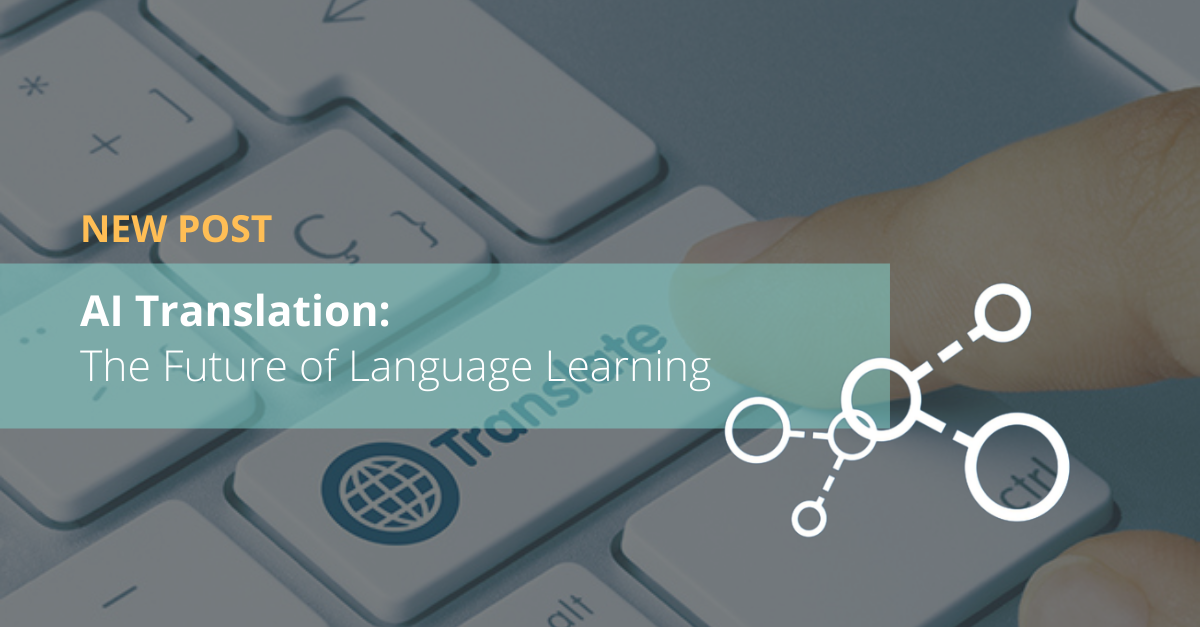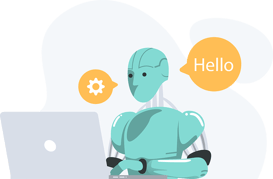
AI Translation: The Future of Language Learning
Admin / March 9, 2023
Machine translation (MT) is not new. In fact, it has been around for more than half a century. However, significant advances have only recently simulated human reasoning. This is due to the incorporation of Artificial Intelligence and its neural model.
And the result? Excellent language processing for more accurate and natural translations, as well as the ability to understand large volumes of text.
Nevertheless, there is a long way to go. MT still needs to be supervised by human translators. So, what does the future hold for AI translation? How will it affect language learning?
What is AI translation?
AI translation is a machine translation process based on complex deep learning algorithms. Using intelligent behavior, it can reason and understand a source text and generate another in a different language.
In order to understand the source and linguistically construct sentences in another language, a deep AI translator, or deep learning, employs a system of neural networks inspired by the workings of the human brain.
In machine translation, artificial intelligence has helped algorithms to improve parsing behavior, learn word usage, interpret according to context, and structure the sentence.
Evolution of AI translation
Machine translation emerged in the 1960s. It was developed by humans and its main purpose was to produce first-draft translations to be later improved on by human translators.
In the 1990s, MT based on statistical models started being used. While this was a major advance, errors were still very significant. As a consequence, this method became intertwined with the previous one, creating more popular machine translation that came to be used worldwide.
Recently, in 2017, machine translation had a huge breakthrough thanks to the use of artificial intelligence through the application of neural networks.
Statistics and probability in translation are therefore a thing of the past. At present, an AI translator runs a neural and artificial computer process based on how neurons in the human brain are interconnected to obtain reasoning and analysis that resembles that of a person.
Pros and cons of AI Translation
For language learning, or in any other area, machine translation in AI entails a number of advantages:
- Faster learning processes due to the use of mobile devices for learning and taking classes.
- Useful for tourists when interacting with the natives of their destination country, thanks to software and mobile applications.
- Fast, near-instantaneous results with high accuracy.
- Translation in a large number of languages.
- Convenience for the Internet user. Generally, AI translation is integrated in web pages, facilitating the understanding of content in any language.
Of course, there are always disadvantages, especially since this neural method in AI translation still needs further testing and a more complete database. Some of these disadvantages are:
- Initial time cost. An AI-based program needs to be trained with lots of data to reach a point where it can deliver high-quality results.
- Reliance on human translators. AI is not a rival for a human in the translation of emotive, impactful and persuasive texts.
- Confidentiality and Privacy. Free AI-based translation services are unlikely to comply with the highest standards of data privacy. That's why it is so important to have a professional company that knows perfectly the GDPR.
It should be kept in mind that AI machine translation is based on human reasoning, but does not possess the ability to understand the emotional or cultural meaning of expressions. For example, the translation of ironic sentences is not usually very successful.
Current AI translation technologies
The breakthrough in the processing methods performed by an AI translator has generated several current technologies. Their usage includes:
- Translation using text recognition in images or voice recognition. These functions are provided by Google Translate.
- Translation in communication using natural language in chatbots. This technology is provided by Microsoft.
- Real-time translation, especially for international business relations. An example of this is the technology provided by Waverly Labs audio devices.
The future of AI translation

AI translation has brought with it great advances for the development of technologies that benefit us all, for language learning and for the understanding of any type of content anywhere in the world.
Consequently, the various technologies employing AI translation are advantageous both for reinforcing learning within a classroom and for self-learning.
But while the future of AI language translation may be evolving, the truth is that it still does not surpass the power of analysis, creativity, socialization, and understanding and expressing emotions that the human brain possesses.
Perhaps, in the future, an autonomous intelligence will be developed... Or maybe the human brain is insurmountable.
The truth is, AI translations still require human supervision. And in teaching, the presence of educators who help understand everything that builds a language beyond its words is essential.
